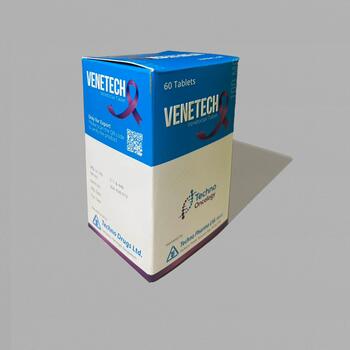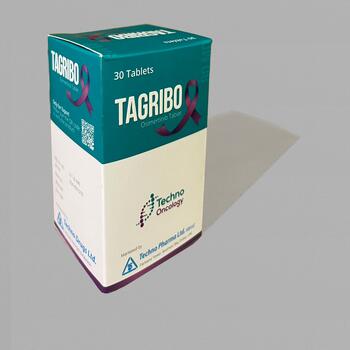Palbocent 125

Indications
Palbociclib is primarily used to treat hormone receptor-positive (HR+), HER2-negative advanced or metastatic breast cancer.
🔹 Common treatment combinations:
- With letrozole (an aromatase inhibitor) – for postmenopausal women as initial endocrine-based therapy.
- With fulvestrant – for women whose disease has progressed after prior hormone therapy.
Mechanism of Action
Palbociclib selectively inhibits CDK4 and CDK6, which are proteins involved in regulating cell division.
- In HR+ breast cancer, these kinases are overactive, pushing cancer cells to divide uncontrollably.
- By blocking CDK4/6, palbociclib slows down or stops cancer cell growth, particularly in cells that are hormone-receptor positive.
Dosage & Administration
- Standard Dose: 125 mg once daily for 21 days, followed by 7 days off (a 28-day cycle).
- Take with food, at the same time each day.
- Can be used in capsule or tablet form.
Dose Adjustments:
May be required in cases of:
- Low white blood cell counts (neutropenia)
- Liver or kidney impairment
- Drug interactions (e.g., with CYP3A inhibitors)
Efficacy / Effects
Clinical trials (e.g., PALOMA-2 and PALOMA-3) have shown that palbociclib:
- Doubles progression-free survival in combination therapy vs hormone therapy alone.
- Helps delay the need for chemotherapy.
- Maintains quality of life with manageable side effects.
Common Side Effects
| Very Common | Explanation |
|---|---|
| Neutropenia | Low white blood cells → risk of infection |
| Fatigue | Tiredness, weakness |
| Nausea | Often mild to moderate |
| Alopecia | Hair thinning or loss |
| Diarrhea / Constipation | GI disturbances |
| Stomatitis | Mouth sores |
Serious Side Effects (Rare but Important)
- Febrile neutropenia (infection with low WBC)
- Pulmonary embolism (blood clot in the lung)
- Liver function abnormalities
- QT prolongation (heart rhythm changes – rare)
Monitoring During Treatment
- Complete blood counts (CBC): before starting and every 2 weeks for the first 2 months, then monthly.
- Liver function tests
- Signs of infection or unusual bleeding
- Drug interaction check (CYP3A interactions)







